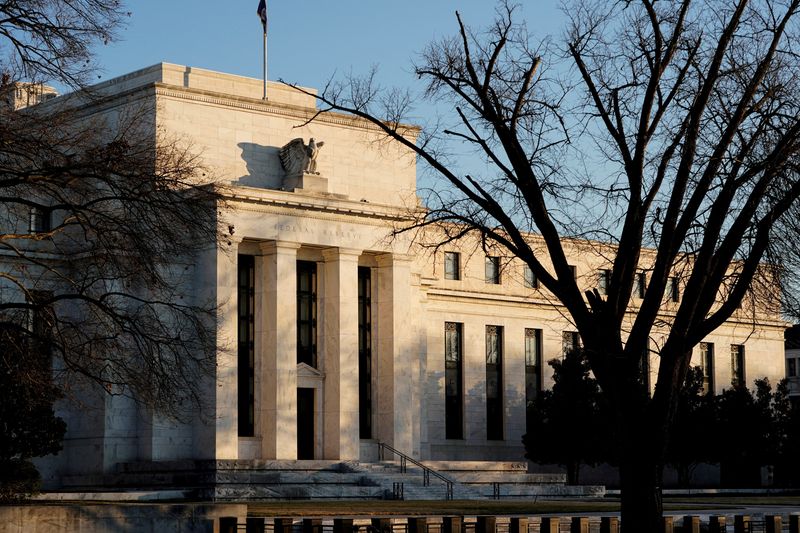By Michael S. Derby
NEW YORK (Reuters) -The Federal Reserve's efforts to drain liquidity from the financial system have finally pushed inflows into a critical central bank tool below the $1 trillion mark for the first time since late summer 2021.
Cash from money market funds and other eligible firms flowing into the Fed's reverse repo facility stood at $993.3 billion on Thursday, which was the first time flows fell under the $1 trillion mark since Aug. 10, 2021. The move under that threshold came as money has been steadily flushed out of the facility over recent months after hitting a record $2.554 trillion peak on Dec. 30, 2022.
The Fed's reverse repo facility is part of the central bank's rate control toolkit that aims to provide a floor underneath short-term interest rates to ensure the central bank retains control over the federal funds rate, its chief lever for influencing the direction of the economy.
The facility takes in cash from eligible financial firms and pays them for the de facto loans, with the rate currently at 5.3% versus the fed funds target rate range of between 5.25% and 5.5%.
The reverse repo facility has come to be seen by many market participants and some in the central bank as a proxy for excess liquidity in the financial system. Inflows into the facility expanded rapidly when the Fed was aggressively buying bonds to provide stimulus during the depths of the coronavirus pandemic and its immediate aftermath, taking reverse repos sharply higher from nearly zero inflows in the spring of 2021.
Last year, as part of its effort to withdraw its stimulus, the Fed began to shrink its balance sheet by allowing just shy of $100 billion per month in bonds it owns to mature and not be replaced. Thus far that's shaved about a trillion dollars from Fed holdings.
Until fairly recently, Fed efforts to pull liquidity out has had only a modest impact on the reverse repo inflows, which had held above $2 trillion per day until mid-June.
Money has been flowing out of reverse repos because firms can now invest in private securities at better returns, and a surge of Treasury bills is drawing their attention away from the central bank offering.
J.P. Morgan economists said Thursday that reverse repo balances "should decline further" given what's happening with Treasury debt offerings.
The accelerating decline of the reverse repo facility has fueled questions about how far the Fed has left to go on shrinking the size of its balance sheet.

Fed officials believe the process still has a long way to go even though they may well be done with rate rises. At least one central banker has suggested reverse repo take-up will return to zero before the central bank can consider stopping its balance sheet wind-down.
Risks to a premature end to balance sheet contraction are modest, the J.P. Morgan economists said, with the process likely to continue to the end of 2024. They project reverse repo levels will stand at $700 billion at that point.